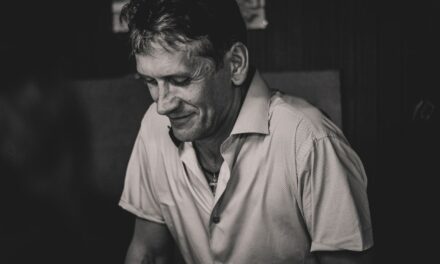Antoine Largillière was born in 1652 in Paris, a city that would later become the epicentre of his artistic career. His early life was marked by the cultural richness of the French capital, which was undergoing a transformation under the reign of Louis
The son of a painter, Largillière was exposed to the world of art from a young age, fostering a deep appreciation for the craft. His formal education began in earnest when he was sent to study under the tutelage of the renowned artist, Charles Le Brun, who was instrumental in shaping the artistic direction of the French Baroque movement. This period of apprenticeship not only honed Largillière’s technical skills but also instilled in him a profound understanding of composition and colour theory.
As he matured, Largillière’s artistic inclinations led him to explore various styles and techniques. He travelled to Flanders, where he encountered the works of the great Flemish masters, such as Peter Paul Rubens and Anthony van Dyck. This exposure broadened his artistic horizons and influenced his approach to portraiture.
The combination of his formal training and the rich artistic environment of Paris allowed Largillière to develop a unique style that would later distinguish him in the competitive art scene of the late 17th century.
Summary
- Nicolas de Largillière was born in Paris in 1656 and received his early artistic training from his father, a successful portrait painter.
- Largillière rose to prominence in Paris during the late 17th and early 18th centuries, becoming one of the most sought-after portrait painters of his time.
- His artistic style was influenced by the work of Peter Paul Rubens and Anthony van Dyck, and he was known for his use of rich colours and dramatic lighting in his portraits.
- Largillière’s portraits attracted the patronage of the French aristocracy and European royalty, leading to international success and travels throughout Europe.
- Despite his professional success, Largillière’s personal life was marked by financial difficulties and strained relationships, which impacted his legacy in art history.
Rise to Prominence in Paris
Largillière’s ascent in the Parisian art world was marked by a series of significant commissions that showcased his burgeoning talent. By the late 1670s, he had established himself as a prominent portraitist, attracting the attention of the French aristocracy. His ability to capture not only the likeness but also the character and social status of his subjects set him apart from his contemporaries.
The opulence of his portraits resonated with the tastes of the time, as they reflected the grandeur and sophistication of the French court. The turning point in Largillière’s career came when he was commissioned to paint a series of portraits for members of the royal family and influential nobility. His work for figures such as Madame de Maintenon and various members of the court solidified his reputation as one of the leading portraitists in France.
The success of these commissions allowed him to secure a place within the prestigious Académie Royale de Peinture et de Sculpture, further enhancing his status as an artist of note. As he navigated the complexities of court life, Largillière’s portraits became synonymous with elegance and refinement, capturing the essence of an era defined by its artistic achievements.
Artistic Style and Influences
Largillière’s artistic style is often characterised by its vibrant colour palette and meticulous attention to detail. He adeptly blended elements of Baroque grandeur with a more intimate approach to portraiture, creating works that were both visually striking and emotionally resonant. His ability to convey texture and fabric through paint was particularly noteworthy; he had a remarkable talent for rendering luxurious materials such as silk and velvet, which added depth and richness to his compositions.
Influenced by both French and Flemish traditions, Largillière synthesised these styles into a distinctive approach that set him apart from his peers. The influence of Rubens is evident in his dynamic compositions and use of colour, while van Dyck’s emphasis on psychological depth can be seen in Largillière’s portraits. This fusion of influences allowed him to create works that were not only aesthetically pleasing but also imbued with a sense of narrative and character.
As he continued to evolve as an artist, Largillière’s style became increasingly sophisticated, reflecting both his personal growth and the changing tastes of the art world.
Portraiture and Patronage
Portraiture was at the heart of Largillière’s oeuvre, serving as both a means of artistic expression and a reflection of societal values. His portraits often depicted members of the aristocracy, capturing their status and identity through carefully constructed imagery. Largillière had an innate ability to convey not just physical likeness but also the personality and social standing of his subjects.
This skill made him a sought-after artist among patrons who wished to immortalise their image in a manner that conveyed both power and grace. The relationship between Largillière and his patrons was often collaborative; he engaged with them to understand their desires and aspirations, ensuring that each portrait resonated with their individual narratives. This approach not only enhanced his reputation but also fostered long-lasting relationships with influential figures in society.
His ability to navigate these dynamics allowed him to secure numerous commissions, further establishing his prominence in the art world. As a result, Largillière’s portraits became emblematic of an era where art served as a vehicle for personal expression and social commentary.
International Success and Travels
Largillière’s success extended beyond the borders of France, as he garnered recognition from international patrons and collectors. His travels throughout Europe introduced him to diverse artistic traditions and cultures, enriching his own practice. Notably, his time spent in Italy exposed him to the works of Renaissance masters, which further informed his understanding of composition and form.
This international exposure not only broadened his artistic repertoire but also positioned him as a key figure in the exchange of ideas between different artistic communities. As Largillière’s reputation grew, so did his opportunities for international exhibitions and collaborations. He participated in various salons and exhibitions across Europe, showcasing his work to an ever-expanding audience.
His ability to adapt to different artistic environments while maintaining his unique style contributed to his enduring success. The international acclaim he received solidified his status as one of the foremost portraitists of his time, allowing him to leave an indelible mark on the global art scene.
Personal Life and Relationships
Largillière’s personal life was as intricate as his artistic career. He married Marie-Anne de Launay, with whom he had several children, including a son who would follow in his father’s footsteps as an artist. The dynamics within his family often influenced his work; he frequently painted portraits of his wife and children, capturing intimate moments that reflected both familial love and artistic ambition.
These personal connections added depth to his oeuvre, allowing viewers to glimpse into the artist’s life beyond the canvas. His relationships with fellow artists also played a significant role in shaping his career. Largillière maintained friendships with prominent figures in the art world, engaging in discussions that spurred creative growth.
These connections fostered an environment of collaboration and mutual support, enabling him to navigate the complexities of artistic life in Paris. As he balanced family obligations with professional pursuits, Largillière’s personal experiences informed his work, resulting in portraits that resonated with authenticity and emotional depth.
Legacy and Impact on Art History
Largillière’s legacy is firmly rooted in his contributions to portraiture during a pivotal moment in art history. His ability to blend technical skill with emotional resonance set a standard for future generations of artists. The elegance and sophistication inherent in his work influenced not only contemporaries but also later movements such as Rococo and Neoclassicism.
His portraits became benchmarks for capturing the essence of individuals within their social context, paving the way for artists who sought to explore similar themes. Moreover, Largillière’s role within the Académie Royale de Peinture et de Sculpture established him as a key figure in shaping artistic standards in France. His commitment to excellence and innovation inspired countless artists who followed in his footsteps.
As art historians continue to examine his contributions, it becomes evident that Largillière’s impact extends far beyond his lifetime; he remains a vital figure in understanding the evolution of portraiture and its significance within broader artistic movements.
Notable Works and Collections
Among Largillière’s most notable works are portraits that exemplify his mastery of form and characterisation. One such piece is “Portrait of Madame de Maintenon,” which captures the grace and poise of this influential figure at court. The painting showcases Largillière’s ability to convey not only physical likeness but also the subject’s inner strength and dignity.
Another significant work is “Portrait of a Young Woman,” which exemplifies his skill in rendering fabric textures and intricate details. His works can be found in prestigious collections around the world, including the Louvre Museum in Paris and various private collections across Europe. These institutions recognise Largillière’s contributions to art history by preserving and showcasing his masterpieces for future generations to appreciate.
The continued interest in his work underscores its enduring relevance within the canon of Western art.
Techniques and Materials
Largillière employed a range of techniques that demonstrated both technical prowess and innovative approaches to painting. He often used oil paints on canvas, allowing for rich colour saturation and subtle blending that enhanced the lifelike quality of his portraits. His meticulous layering technique enabled him to achieve depth and luminosity, creating an almost three-dimensional effect on flat surfaces.
In addition to traditional methods, Largillière experimented with various materials that contributed to the uniqueness of his work. He utilised fine brushes for intricate details while employing broader strokes for background elements, creating a dynamic interplay between foreground and background. This versatility allowed him to capture not only individual likenesses but also the broader context within which these figures existed, enriching the narrative quality of each portrait.
Critical Reception and Controversies
Throughout his career, Largillière received both acclaim and criticism from contemporaries and art critics alike. While many praised his technical skill and ability to capture character, some detractors argued that his work lacked emotional depth compared to other artists of the time. This criticism often stemmed from comparisons with more dramatic Baroque painters who emphasised emotional intensity over realism.
Despite these controversies, Largillière maintained a loyal following among patrons who appreciated his unique approach to portraiture. His ability to navigate these critical landscapes speaks volumes about his resilience as an artist; he continued to evolve while remaining true to his vision. Over time, critical reception shifted as art historians began to recognise the significance of Largillière’s contributions within the broader context of art history.
Rediscovery and Revival of Interest in Largillière’s Work
In recent years, there has been a resurgence of interest in Antoine Largillière’s work as scholars and collectors alike seek to re-evaluate his contributions within the canon of Western art. Exhibitions dedicated to Baroque portraiture have highlighted Largillière’s role as a pivotal figure during this transformative period in art history. This renewed focus has led to greater appreciation for his technical skill, innovative approaches, and emotional depth.
Art historians are increasingly recognising Largillière’s influence on subsequent generations of artists who sought to capture individuality within their subjects. As exhibitions continue to showcase his masterpieces alongside those of other prominent artists from the same era, it becomes clear that Largillière’s legacy endures—his work remains relevant not only for its aesthetic qualities but also for its exploration of identity within societal contexts. The revival of interest serves as a testament to the enduring power of art to transcend time and resonate with contemporary audiences.
If you are interested in learning more about art techniques and styles, you may also enjoy reading this article on how to enhance your digital art using texture packs and custom brushes. It provides valuable insights on how to take your digital artwork to the next level by incorporating different textures and brushes into your creations.


